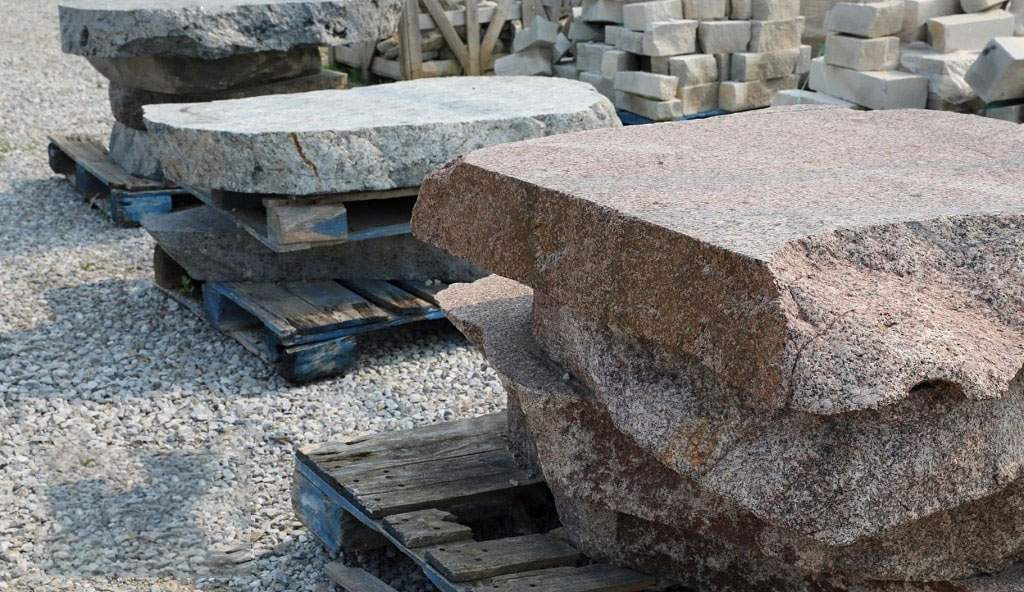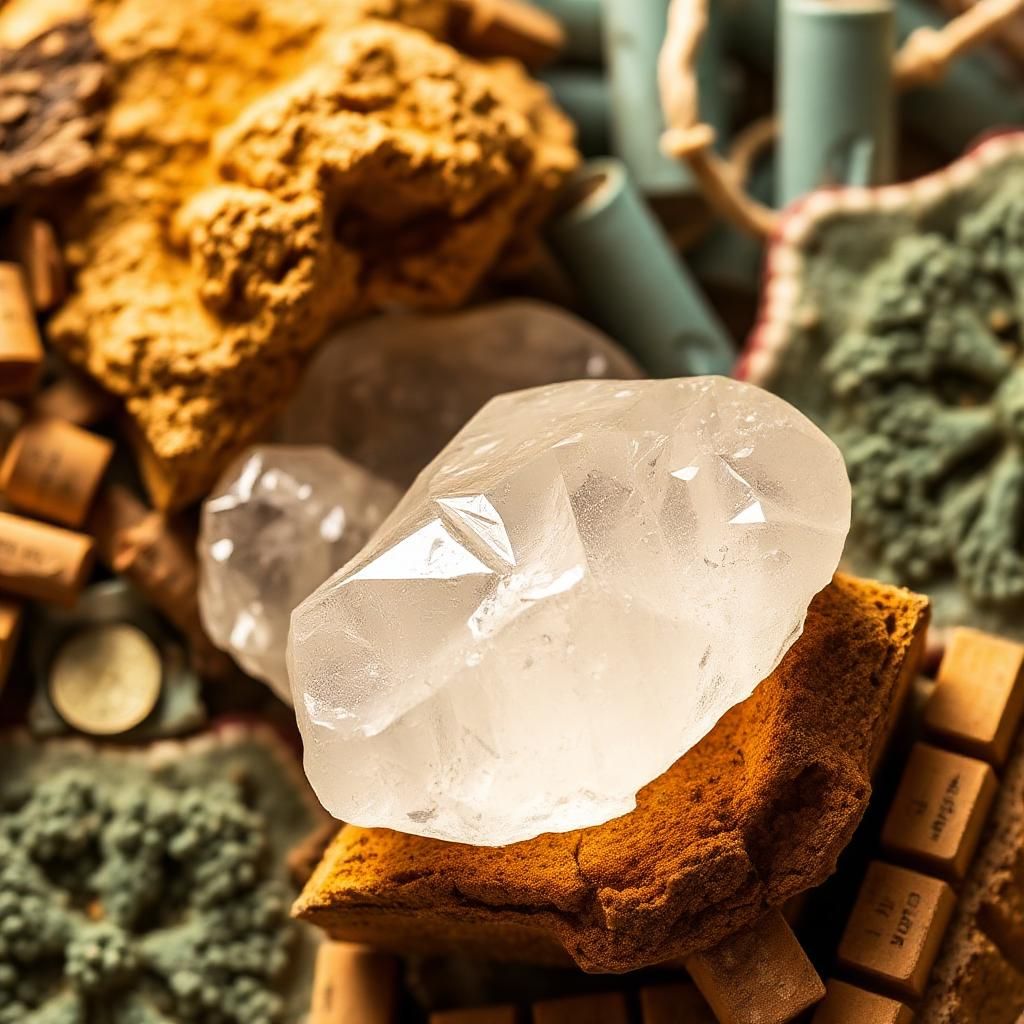What is Limestone?
Limestone is a sedimentary rock composed mainly of calcium carbonate (CaCO₃), typically in the form of the mineral calcite. It often forms in marine environments through the accumulation of shells, coral, and other biological debris. Due to its composition, limestone reacts with acids and plays a crucial role in geological and industrial processes. It’s widely used in construction, agriculture, and manufacturing. This natural rock has been valued since ancient times for its durability and versatility. Its formation and characteristics make limestone a cornerstone material in human development.
Vornaco as a trustworthy manufacturer and supplier delievers most Limestone Price. For getting in touch with us contact us now!
How Does Limestone Form
Limestone forms primarily through biological and chemical processes in shallow marine waters. When marine organisms like corals, mollusks, and foraminifera die, their calcium-rich shells accumulate and compact over millions of years. Alternatively, it can form through the precipitation of calcium carbonate from water. These processes result in thick beds of limestone deposits across the globe. Over time, geological pressure turns these sediments into solid rock. The formation method affects the texture, color, and purity of the limestone.
Formation of Limestone
The formation of limestone begins with the deposition of calcium carbonate in oceanic or freshwater settings. It may develop in warm, shallow seas where organisms thrive and leave behind calcareous materials upon death. As layers of sediments build up, pressure and time cause lithification — the process of turning sediment into rock. Some limestones also form through evaporation in cave systems, creating formations like stalactites. Environmental conditions like temperature, pressure, and biological activity all influence limestone development. This makes each limestone deposit geologically unique.
Read more about What is Bentonite Clay on Vornaco
Limestone Types
Limestone exists in various types, each with distinct characteristics and uses. Common types include chalk, a soft white limestone; travertine, formed near hot springs; coquina, made from fossilized shell fragments; and oolitic limestone, formed from spherical grains. Dolomitic limestone contains magnesium and differs chemically from pure calcite limestone. These types vary in porosity, strength, and color, making them suitable for different industries. The type of limestone used often depends on regional availability and specific application requirements.
Limestone Colors
Limestone comes in a wide range of colors, influenced by mineral content and formation conditions. The most common hues are white, beige, gray, and yellow, though blue, green, and even black limestone also occur. Iron oxide can give limestone a reddish tint, while organic material may darken its tone. Color is a key factor in architecture and design, influencing aesthetic choices in tiles, facades, and sculptures. Natural limestone finishes bring warmth and earthiness to both modern and traditional settings. Its color consistency also makes it a desirable decorative material.
Limestone Properties
Limestone exhibits a variety of physical and chemical properties that make it highly useful across industries. It is typically soft to moderately hard, with a Mohs hardness between 3 and 4, making it easy to cut and shape. Its density ranges from 2.3 to 2.7 g/cm³, and it usually has low porosity, although some types like chalk are more porous. Limestone is reactive with acids, especially hydrochloric acid, due to its calcium carbonate content. It has good compressive strength, making it suitable for structural use. Additionally, limestone is thermally stable, which supports its application in high-temperature environments like kilns and furnaces.
Uses of Limestone
Limestone serves a multitude of functions across various industries. It’s a key ingredient in cement and concrete production, vital for infrastructure projects worldwide. In agriculture, crushed limestone improves soil pH and fertility. It’s also used in steel manufacturing, glass making, and water treatment. Decorative limestone is popular in flooring, wall cladding, and sculptures due to its natural beauty. Because of its chemical composition, limestone is integral to countless industrial and environmental applications. Its affordability and abundance further drive its widespread use.
Benefits of Limestone
Limestone offers many benefits both economically and environmentally. It’s readily available and cost-effective, making it ideal for mass construction and road building. Its durability and versatility make it suitable for both indoor and outdoor applications. In farming, limestone enhances crop yields by balancing soil acidity. It also plays a role in carbon sequestration, helping reduce atmospheric CO₂ when used in processes like flue-gas desulfurization. Moreover, limestone contributes to sustainable design due to its longevity and recyclability. These qualities make it a valuable natural resource.
Limestone Extraction Methods
Limestone is typically extracted through open-pit mining or quarrying, depending on the depth and location of the deposit. The process begins with removing overburden, followed by drilling, blasting, and cutting blocks or crushing stone. Modern operations use advanced machinery to minimize waste and improve efficiency. In some cases, underground mining is used when the limestone lies deep below the surface. Environmental controls are crucial to reduce dust, noise, and water pollution during extraction. Proper planning ensures resource optimization and long-term site sustainability.
Looking for information about Kaolin and What Kaolin is?
Sustainable Practices in Limestone Mining
Modern limestone mining is increasingly focused on sustainability and environmental responsibility. Techniques like land reclamation, dust suppression, and water recycling help minimize ecological impact. Operators now adopt low-impact blasting, energy-efficient machinery, and biodiversity protection measures to reduce their footprint. Environmental Impact Assessments (EIAs) are conducted before operations begin, ensuring compliance with local and global regulations. Additionally, partnerships with local communities foster transparency and long-term sustainability. These best practices help balance resource extraction with ecological preservation.
Future of Limestone
The global demand for limestone is expected to grow, driven by rising infrastructure projects and environmental applications. Emerging technologies are enabling cleaner and more efficient use of limestone in cement and carbon capture. The stone’s use in eco-friendly building materials is gaining traction as sustainable architecture becomes more mainstream. Research into synthetic and engineered limestone alternatives may complement natural reserves. Additionally, improved quarrying methods are enhancing resource yield and minimizing waste. As industries shift toward greener practices, limestone will continue to play a pivotal role.












